With beautiful jewel tones of purple, orange and gold, and an earthy sweet flavor, beets are not only a striking addition to your dinner table but a tasty one too. If all you have ever known are canned or pickled beets, toss all preconceived ideas out of your head! Fresh beets need little to enhance their deep, rich flavor, but roasting them will certainly accentuate their sweetness!
Maybe purple is the new color for fall?!
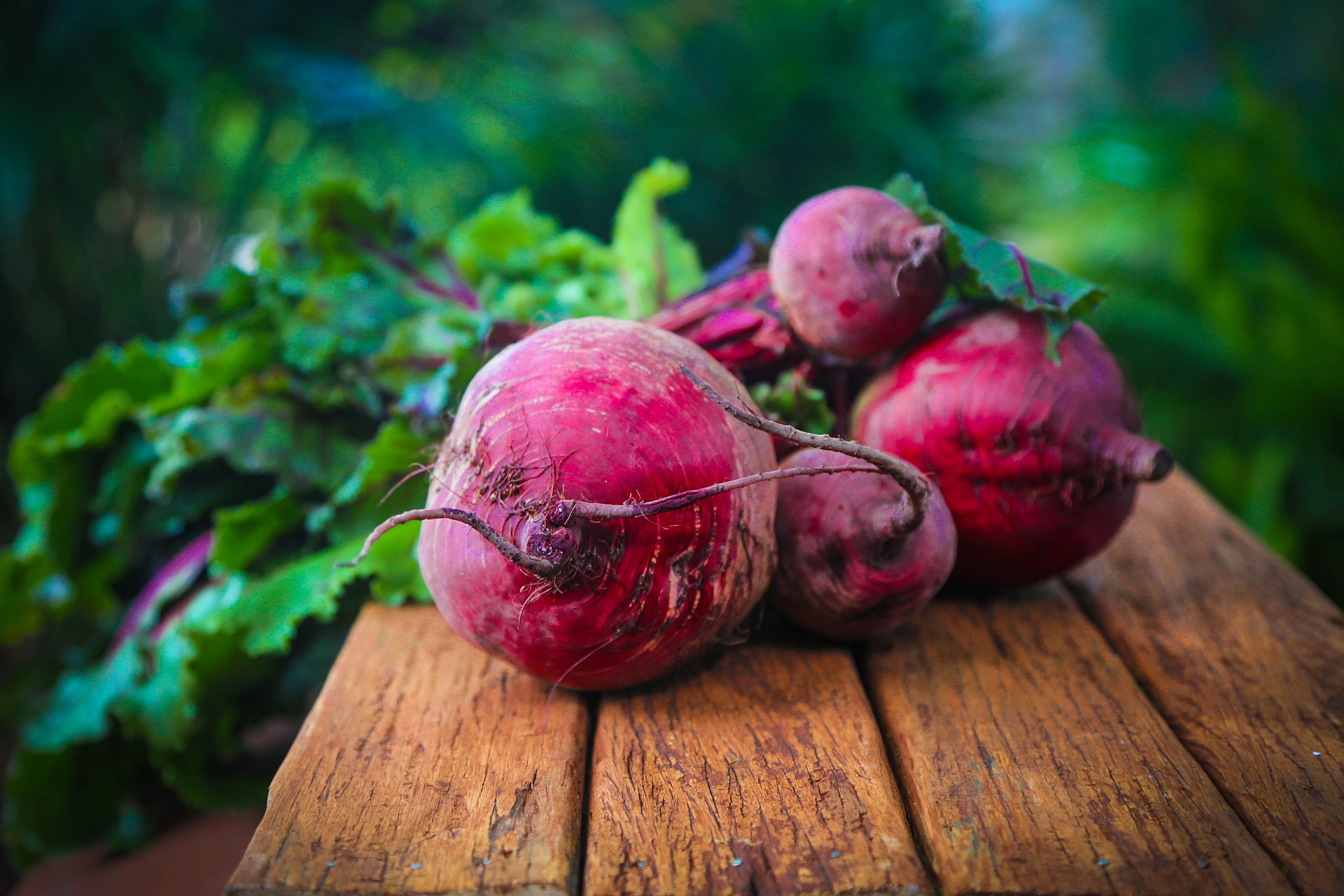
If the idea of purple fingers has prevented you from trying to cook beets yourself, you can always buy golden beets which are also very sweet but with less earthy flavor. However, you will also miss out on all the betalain pigments which give purple beets amazing rich color and stellar health benefits.
These beautiful pigments provide antioxidant, anti-inflammatory and detoxification support. Essentially, they scavenge for damaging particles in our bodies to help inactivate and eliminate them. Betalains are protective and some studies show that they may help reduce risk for several types of cancers including stomach, colon, breast and lung.
Beets are an excellent source of folate, containing more than ⅓ of your daily needs, making them the perfect food especially for women of childbearing years.
Of particular interest to many individuals with Hypertension is the intriguing research on beets and blood pressure. These roots contain potassium which works in conjunction with sodium to manage blood volume and therefore, blood pressure. Beets also contains nitrate which the body converts to nitrite and nitric oxide which relax the blood vessels allowing blood volume to flow more easily and lowering pressure. Several studies have shown that consumption of about 1 cup of beetroot juice per day can lower blood pressure almost as well as most hypertensive medications!!
Athletes may also get a little boost in their performance if beets are consistently consumed improving oxygen use and stamina.
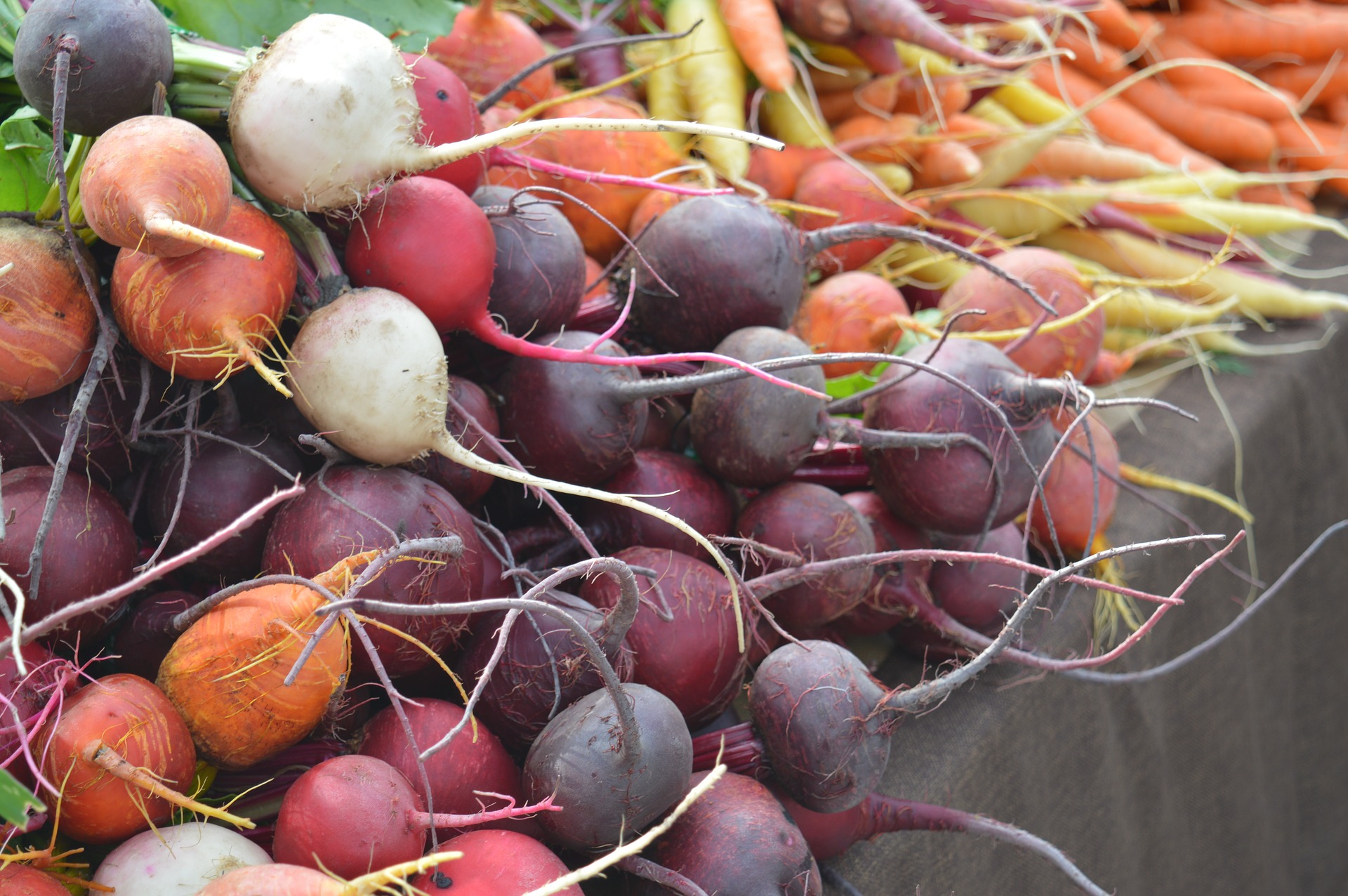
Although beets have a remarkably sweet flavor, they actually have a low glycemic load of 8.3. According to the Academy of Nutrition and Dietetics, less than 10 is considered low, 11-19 is moderate and 20 or above is high. Enjoy a serving of sweet beets and don’t worry that it will spike your blood glucose.
When foods like beets have remarkable health benefits, it can make them much more appealing, but the reality is that unless they taste great and are prepared well, most of us aren’t going to want to eat them.
Every time I get in the kitchen to cook, my goal is to unpack amazing flavor from the ingredients in as few steps as possible. For beets, this is not difficult. They don’t need a lot of fuss.
This recipe is perfect for a weeknight meal to go along with a roasted chicken or pork loin or even salmon. The beets and carrots are “candy” sweet, making this the only vegetable recipe that my 1 year old never refuses!
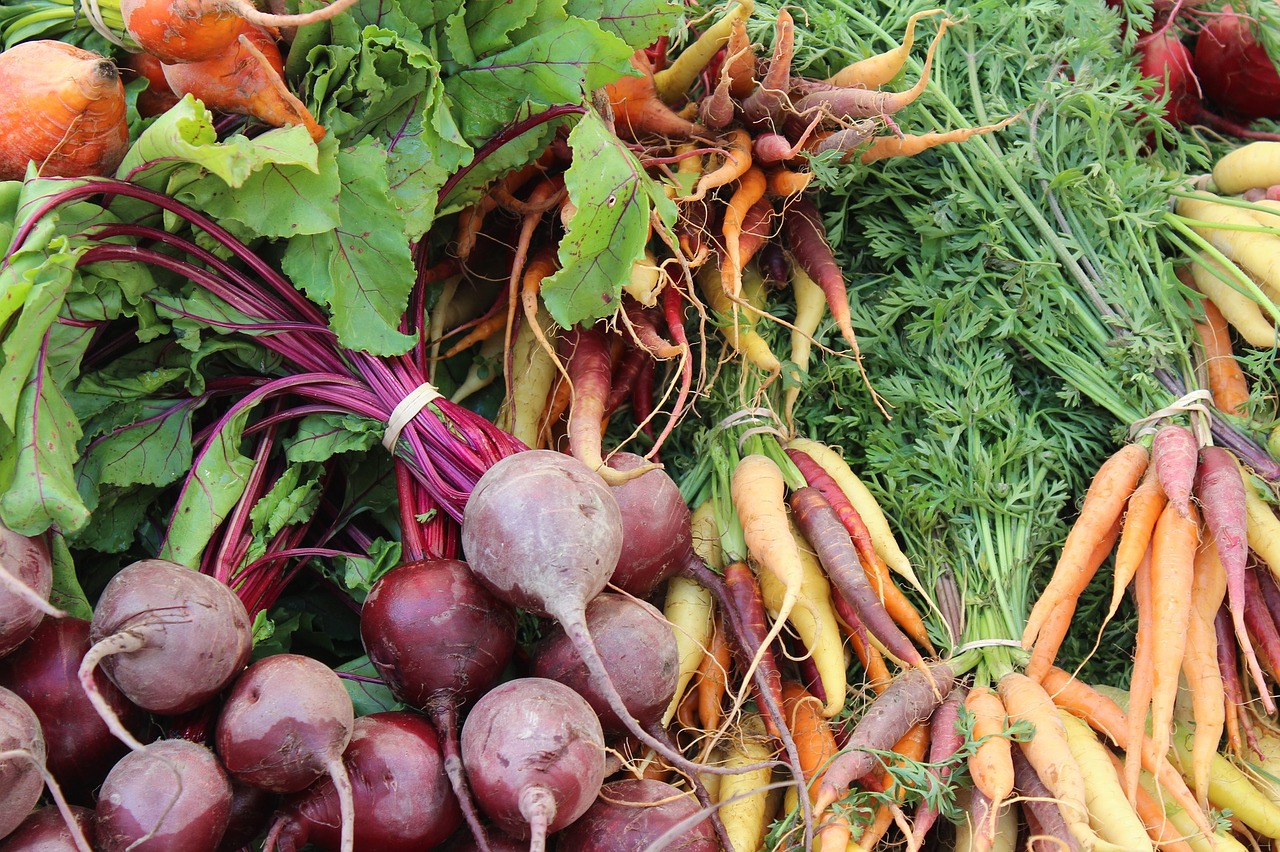
Cheers for purple!
Candy Sweet Roasted Beets & Carrots
INGREDIENTS
1 pound beet roots (16oz)
3 medium carrots
1 tbsp olive or canola oil
⅛ tsp Kosher Salt
1/16 tsp Ground Black Pepper (hefty pinch)
DIRECTIONS
Preheat oven to 400 degrees. Line baking sheet with foil and spray with non-stick cooking spray. Peel carrots and beets and then cut into bite size pieces. Place beets and carrots in medium bowl and then add oil, salt and pepper and stir to combine. Spread beets and carrots on foil lined pan and roast in oven for 30-40 minutes or until fork tender and slightly caramelized in color. Enjoy!
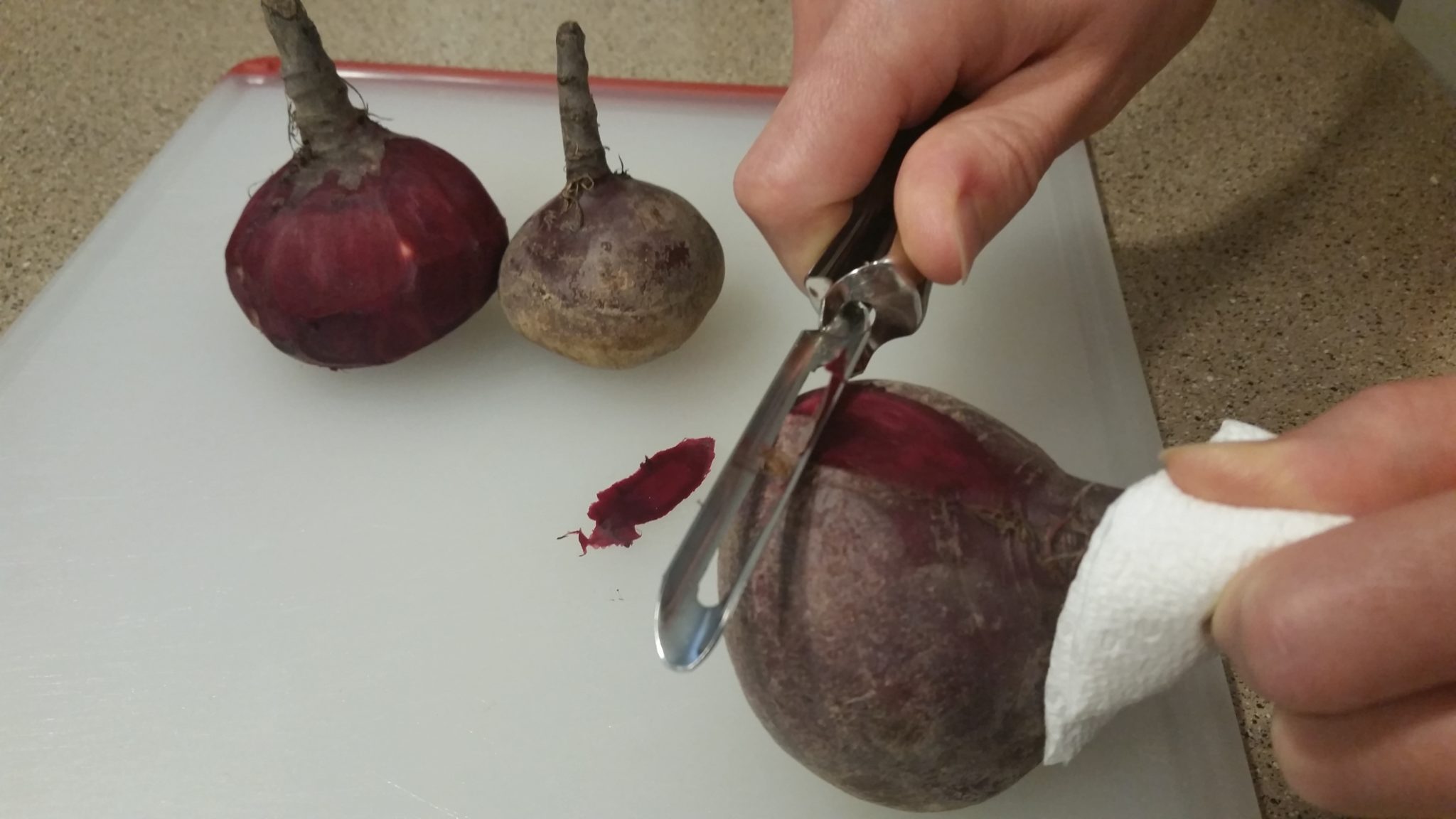
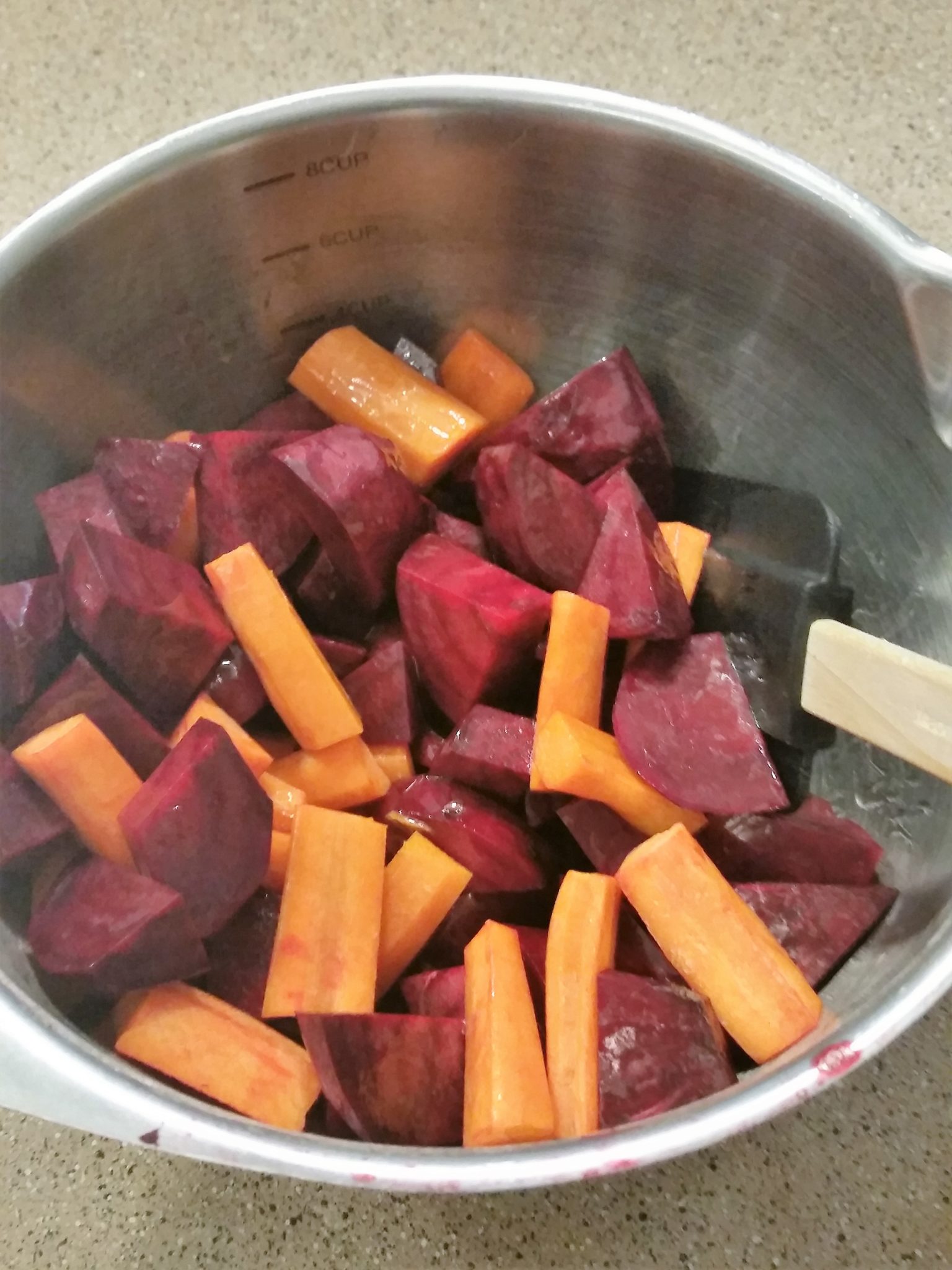
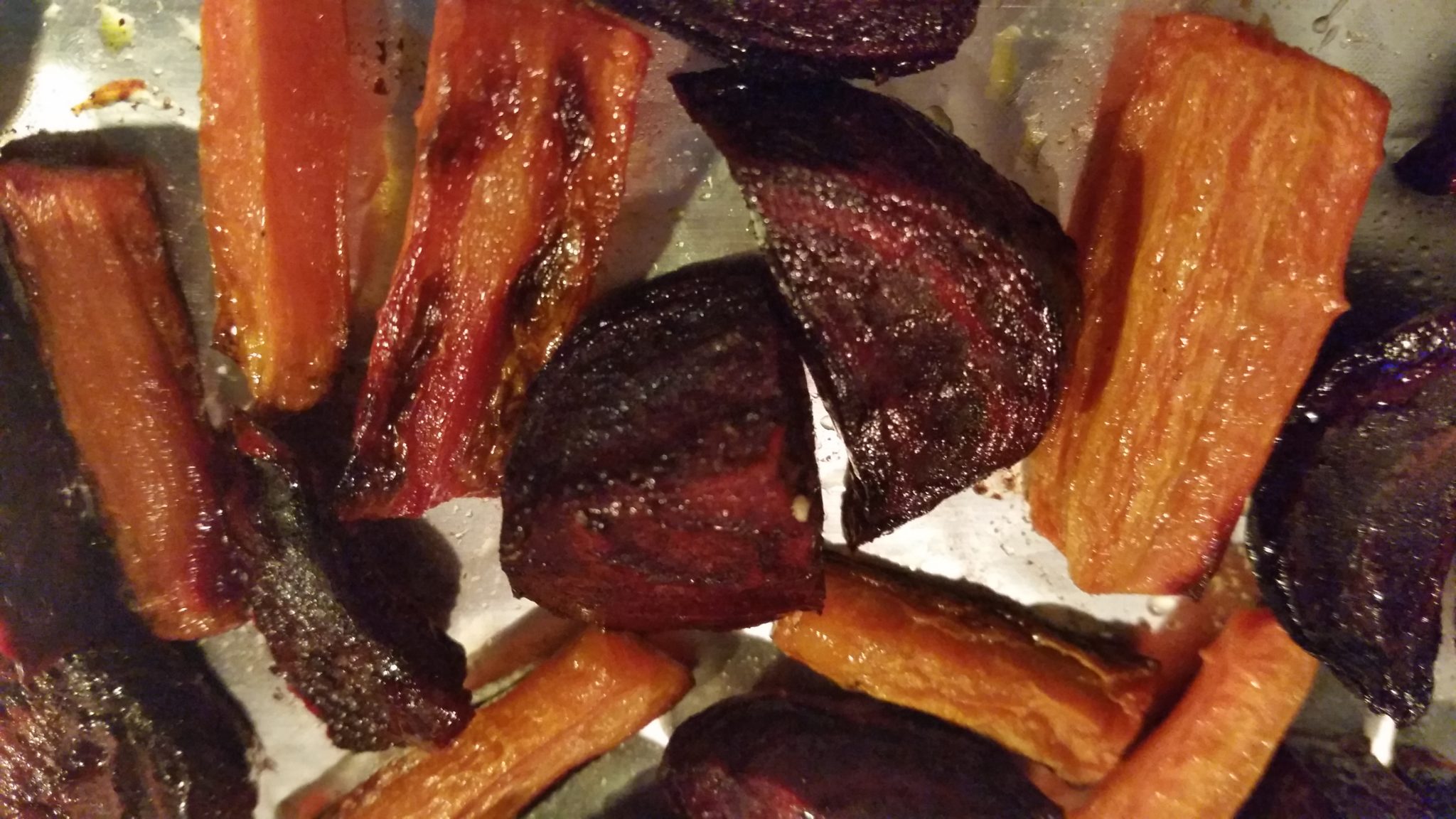
SERVINGS: 4, about ¾ cup per serving
NUTRITION PER SERVING
Calories 95
Total Fat 4g
Cholesterol 0mg
Sodium 153mg
Carbohydrate 15g
Dietary Fiber 4g
Sugar 10g*
Protein 2g
*all sugars are naturally occurring; no added sugar
TRUTH: Daniel said to the guard “Please test your servants for ten days: Give us nothing but vegetables to eat and water to drink.” At the end of the ten days they looked healthier and better nourished than any of the young men who ate the royal food.
Daniel 1:11-15 (NIV,adapted)
REFERENCES
Academy of Nutrition and Dietetics, What is Glycemic Index, by Molly Kimball, RD, CSSD; published 2/5/14; accessed 10/7/16, http://www.eatright.org/resource/food/nutrition/dietary-guidelines-and-myplate/what-is-glycemic-index
